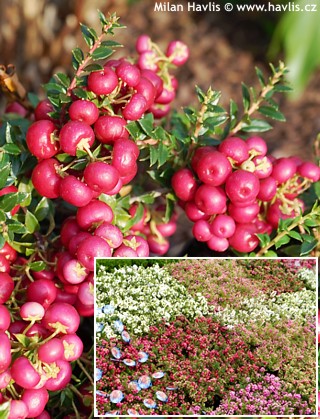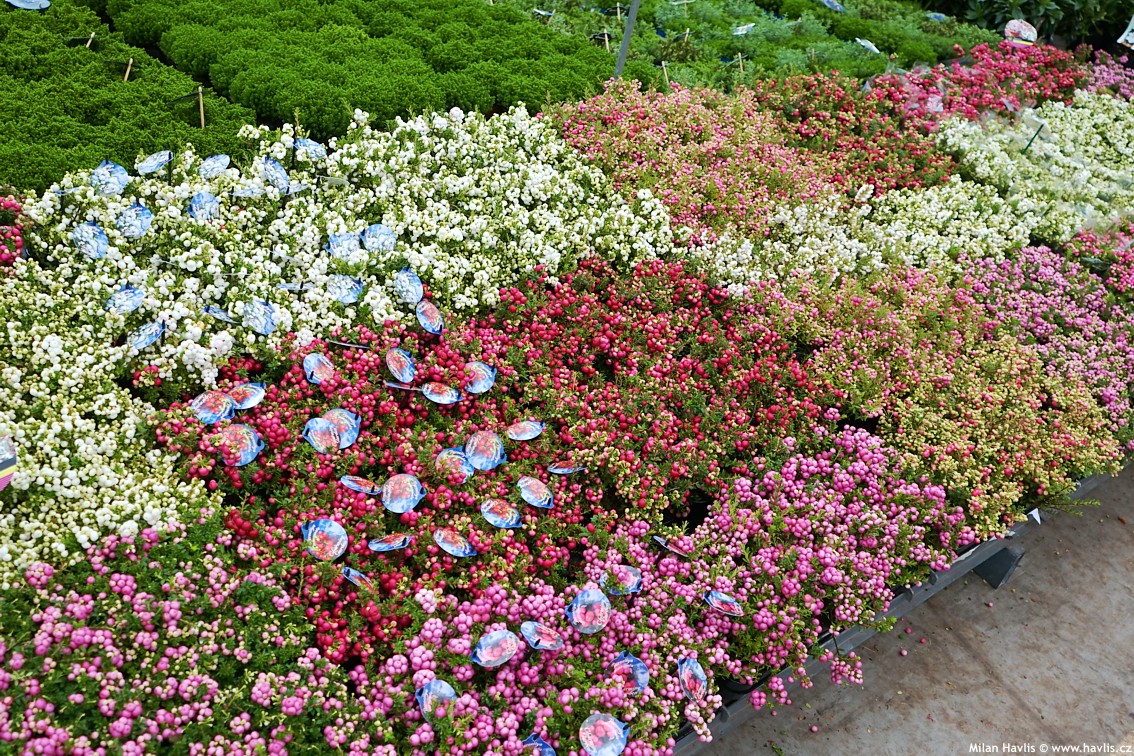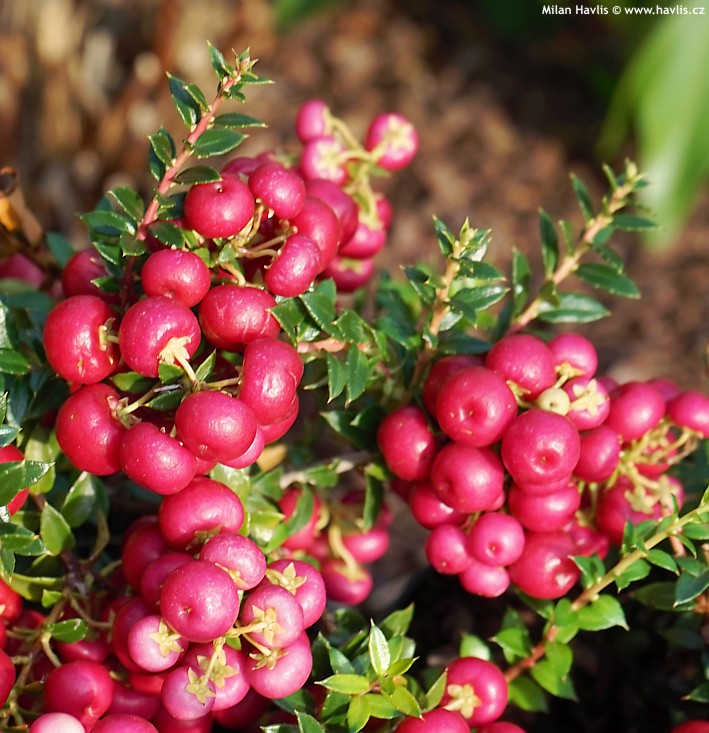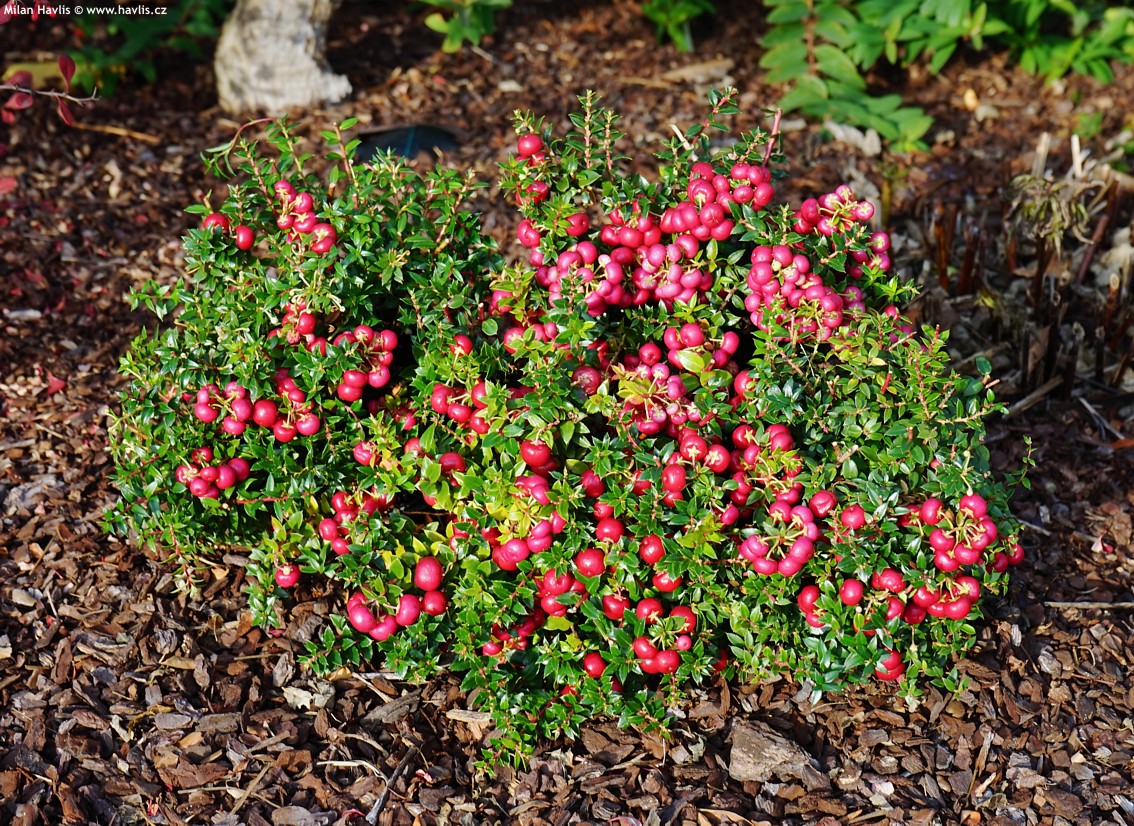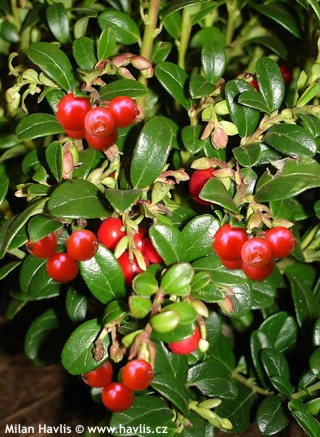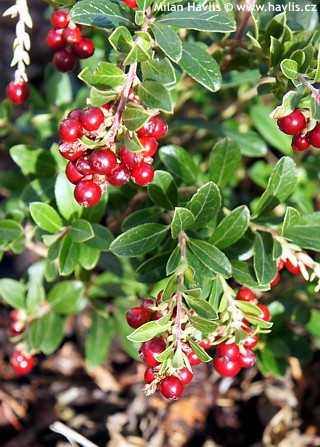Gaultheria mucronata (syn. Pernettya) + ODRŮDY gaultheria, prickly heath
Gaultheria
Gaultheria, commonly known as pernettya, is an evergreen ericaceous shrub. Prickly heath - g. mucronata comes from southern parts of South America (Chile and Argentina) where the climate can be harsh and winter temperatures are much lower than what we would expect from South American countries. Its Spanish name chaura is often used worldwide for all gaultheria species irrespective of their origin.
Prickly heath bears small, ovate, pointed, evergreen, highly glossy, mid to dark green leaves. From late spring and early summer open tiny, white, urn-shaped flowers which are followed by large, attractive berries in many colours - white, various depths of pink, rosy purple, and red. They are edible but taste like nothing so don't expect a gourmet experience. As the fruit shows its vibrant colours from late summer and autumn chaura is commonly used in heather-style displays in pots and troughs on patios and balconies, or planted in a border mixed with similar peat-loving plants such as pieris, leucothoe, hebe, dwarf rhododendrons or azaleas. The plant grows vigorously like pyracantha and is often pruned or trimmed for nice shapes. Do so in later spring before flowering.
As an ericaceous plant it requires soil that is light, acidic, and constantly moist (not wet). If your garden soil is too heavy do NOT dig a deep hole but make a shallow and wide bed, topped up with a good mixture of peat, fine bark, and leaf (forest) litter. Keep the soil moist by mulching and water the plant during flowering and when the fruit is formed. Slow-release fertilizers can help but chaura is not demanding. It is hardy to about -24°C (USDA zone 6), and may withstand short spells of a couple of degrees lower, however it can be tricky in a pot over winter in zone 6.
Last update 20-11-2019

































